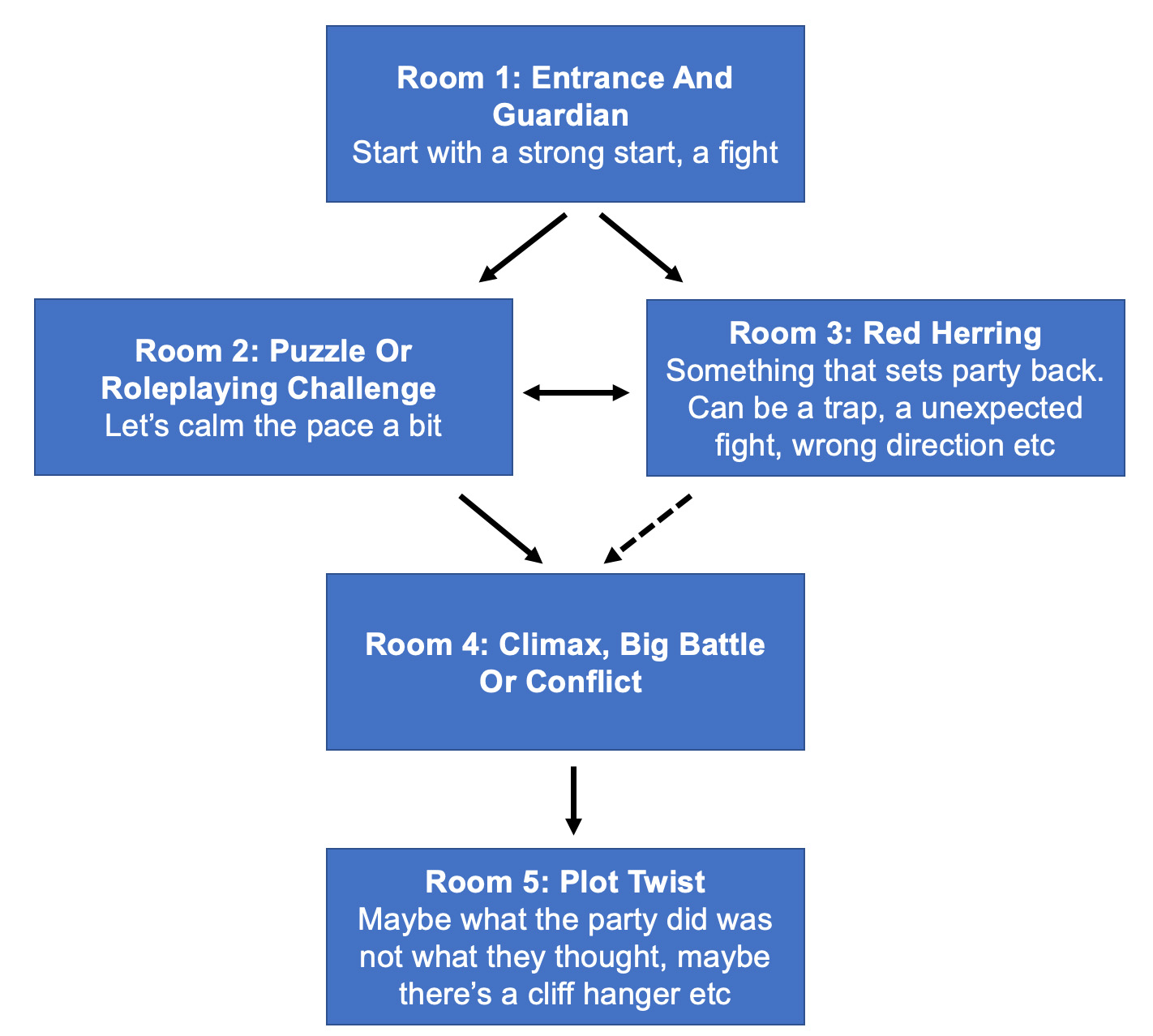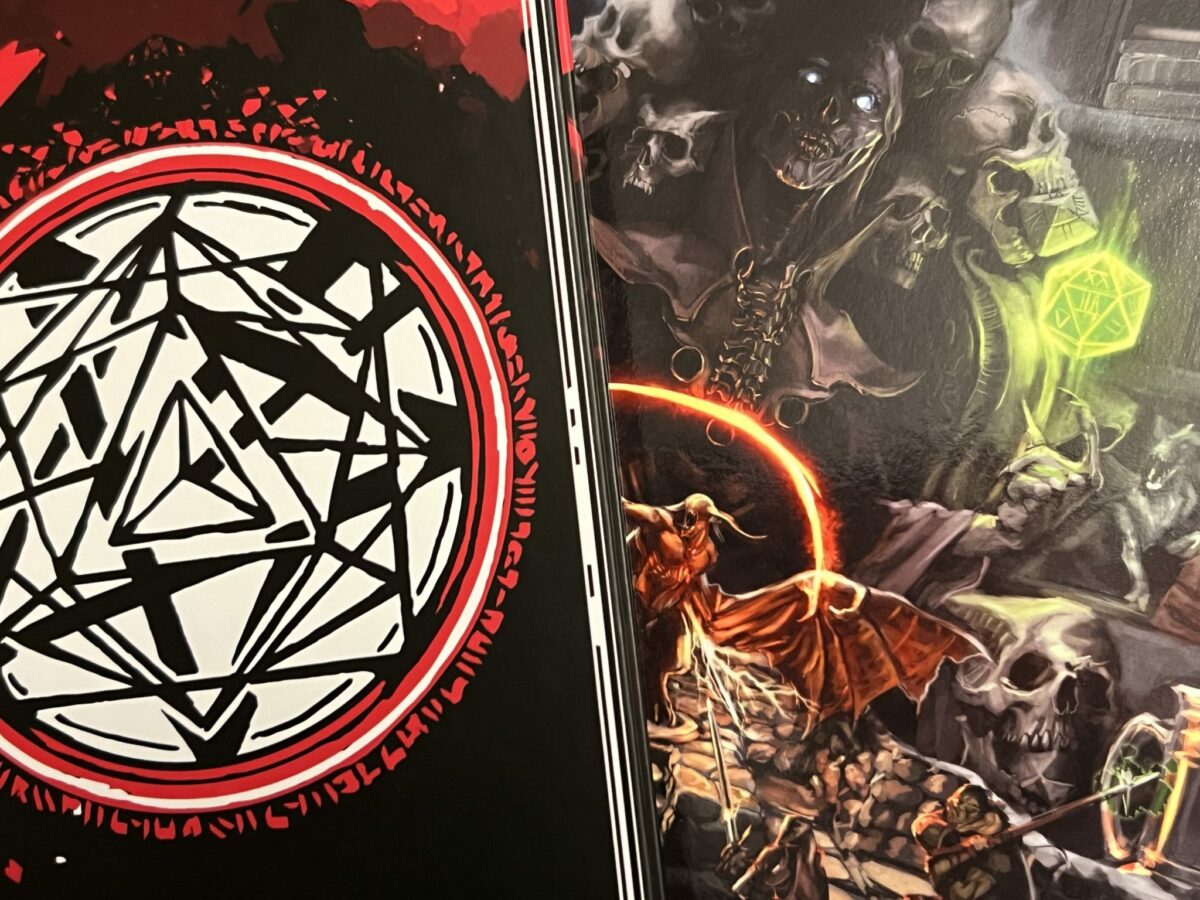Since I re-started playing Dungeons & Dragons in 2018, I have listened to a ton of youtube videos, podcast and real a bunch of books all on the topic of how to DM.
Here are the top 3 tips I have learned that will set up you to make your first Dungeons & Dragons adventure.
I am assuming you have the based knowledge of the game. Things like roll D20 against a target number, how hit points work, how bonuses and advantages work.
1: The Lazy Dungeon Master
Start by framing the overall game. I find the best way is using the 8 steps of preparation from the book The Return of the Lazy Dungeon Master. They are:
- The Strong Start – Start with a bang, something to wake players up and get the game started. Easiest thing is a fight. See further down the page under the section 2: “The 5 Room Dungeon Method”.
- Potential Scenes – What are some of the activities you expect the heroes could take? Investigate the haunted house, talk to the blacksmith, shadow the dodgy mayor etc.
- Secrets and Clues – What are truths in the world that heroes might learn of? e.g. the haunted house is built on an ancient graveyard, the blacksmith is reluctant to talk as his wife is held hostage, the mayor is working for the thieves’ guild etc. Important to keep these secrets and clues decoupled from NPCs.
- Fantastic Locations – What are the locations needed? The haunted house, the blacksmith’s home, the townhall etc
- NPCs – Who are the NPCs the heroes might run into and what are their motives and behaviours? e.g. the Blacksmith might be stuttering, he is also more likely to open up to people who pet his dog etc
- Monsters – What monsters do you need? This is my own tip, but write up only the basic stuff you need from monsters.
- Magic Items – Treasure, magic items etc if needed.
- Review notes before the game
If you want to speed up the process, the list is
- The Strong Start
- Secrets and Clues
- Fantastic Locations
The author of The Return of the Lazy Dungeon Master, has a Youtube video explaining The eight steps of preparation in detail.
2: The 5 Room Dungeon Method
Now it is time to structure the game. For beginners I recommend using The 5 Room Dungeon Method as it not only provides a simple structure, it also prevents you from over-preparing the game. It is always better to aim for a shorter game than getting frustrated that you cannot conclude the story you wanted to tell with the players.
Note, The 5 Room Dungeon Method doesn’t actually mean you need 5 rooms or even a dungeon. Yes, you can have that, but the 5 “rooms” can also be locations or as abstract as a social encounter.
you can download the full PDF for free, but here is a summary.
3: Timer, Threat, Treat
The book Index Card RPG has a section for setting up structured combat encounters based on having the following three key mechanics:
- Timer. What is putting time pressure on the battle? Do the heroes need to disable the trap before they get crushed? Do they need to free the falsely accused witch from the stake before the fire catches on to her? etc
- Threat. What is the threat to the heroes and / or situations? Monsters is the first one that springs to mind, but it could also be a volcano about to erupt etc
- Treat. What could help the heroes? Are they fighting trolls, maybe there is a campfire (trolls being unable to regenerate if set on fire), it could be a chandelier allowing heroes to swing over the chasm etc.
Runehammer, author of Index Card RPG, has a YouTube video on key mechanics.
